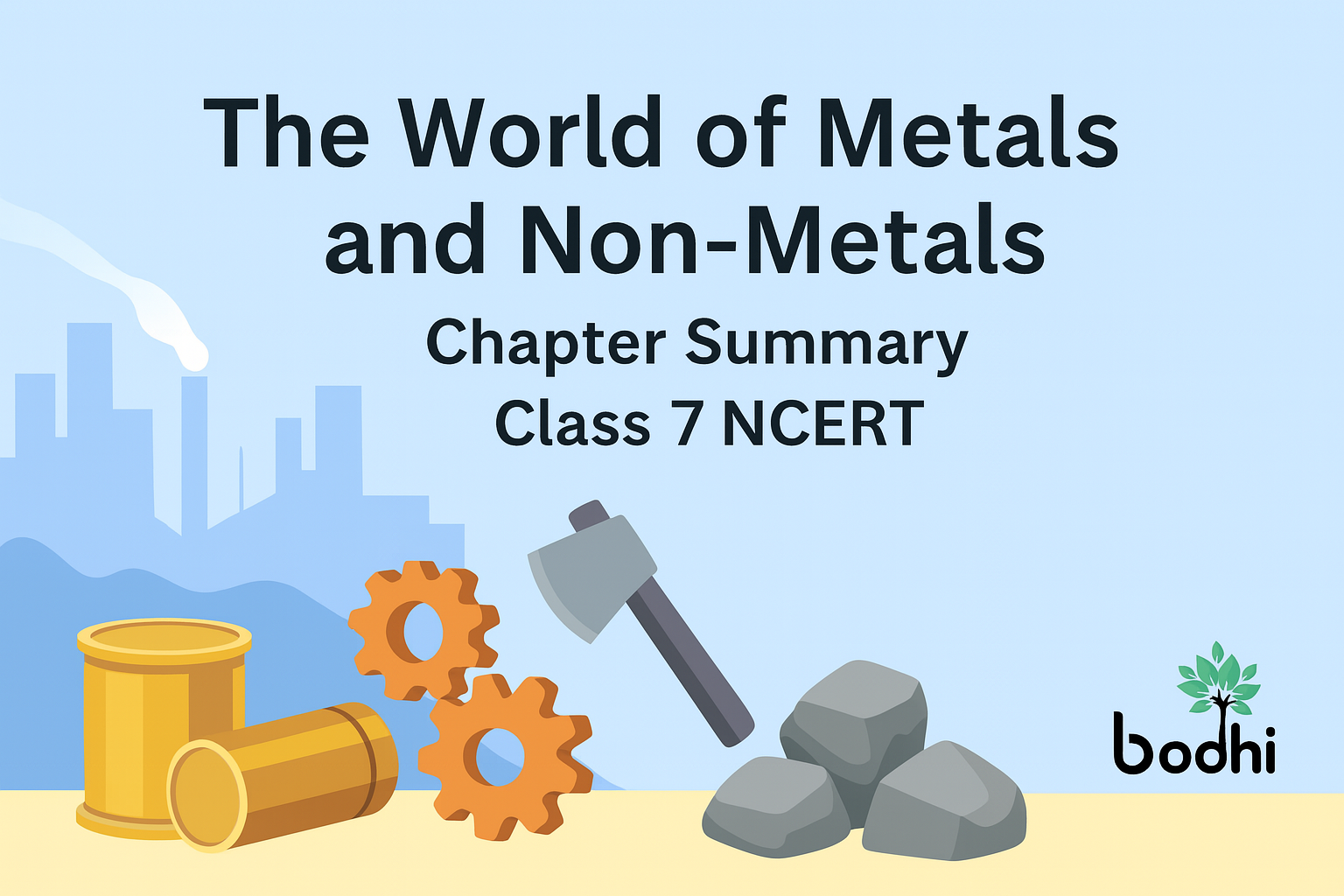Welcome to Bodhiclasses – your trusted companion in making science fun, practical, and meaningful for every curious learner. At Bodhiclasses, we believe learning is most effective when it sparks curiosity and relates to the world around us. Today, let’s dive into a fascinating journey through Chapter 4 – The World of Metals and Non-metals from the NCERT Class 7 Science textbook. This chapter not only opens up the basics of elements but also connects them to our everyday lives in powerful ways.

Have you ever wondered what makes a cooking pot different from a pencil, or why some materials shine while others don’t? This chapter introduces students to metals and non-metals, their key properties, how they react with air and water, and their importance in our daily lives. Through hands-on activities, simple experiments, and relatable examples, students discover the world of elements in a lively and experiential manner.

1. Understanding Metals and Non-metals
The chapter begins with a relatable story of Yashwant and Anandi visiting a village ironsmith. Through their interaction, we understand how common items like spades, axes, and tongs are made using iron and coal, introducing us to metals as essential materials.
2. Physical Properties of Metals
Several core properties of metals are illustrated through fun classroom activities:
- Malleability: Metals like copper and aluminium can be hammered into thin sheets without breaking. That’s why we see aluminium foils and silver varak on sweets.
- Ductility: Metals can be drawn into wires. Copper and aluminium wires are commonly used in electrical fittings and even musical instruments.
- Sonority: When dropped, metals produce a distinct ringing sound unlike wood or coal. This is why school bells, ghungroos, and metal plates sound different when struck.
- Conductivity of Heat and Electricity: Metals heat up quickly and conduct electricity well. That’s why metal utensils are used for cooking, but their handles are made of non-conducting materials like wood or plastic.
3. Reaction with Air and Water
Iron, when exposed to moist air, develops brown deposits called rust. This process, known as rusting, is a common problem for iron-based structures. Rusting can be prevented by painting, greasing, or galvanisation (coating with zinc).
Other metals also react with air and water:
- Magnesium burns with a dazzling white flame forming basic magnesium oxide.
- Sodium, a soft reactive metal, is stored in kerosene to prevent accidents.
4. Non-metals: Different Behaviours
Non-metals like sulfur, phosphorus, oxygen, and carbon behave differently:
- They are usually non-lustrous, non-malleable, and poor conductors.
- When sulfur burns, it forms acidic sulfur dioxide, contrasting the basic nature of metal oxides.
- Some non-metals like phosphorus are so reactive they are stored in water to prevent them from catching fire.
5. Importance of Non-metals
While metals are visibly used in tools and machines, non-metals play vital roles in our life:
- Oxygen is essential for breathing.
- Nitrogen is used in fertilizers for plant growth.
- Carbon forms the basis of life.
- Chlorine purifies drinking water.
- Iodine is used as an antiseptic.
6. Real-World Applications and Integration
The chapter beautifully connects to history, such as the usage of iron tools in ancient India, including the rust-resistant Iron Pillar of Delhi, showcasing early metallurgical advancements. It also encourages students to explore traditional Indian metal crafts, locate metallic resources on a map, and think critically about metal use in modern life.
✨ Key Takeaways
- Metals are generally lustrous, malleable, ductile, sonorous, and good conductors of heat and electricity.
- Non-metals are brittle, non-lustrous, and poor conductors.
- Oxides of metals are basic, while those of non-metals are acidic.
- Rusting is a form of corrosion, preventable through protective coatings.
- Both metals and non-metals are essential for technology, health, agriculture, and daily living.


